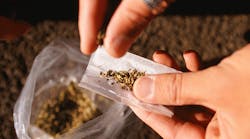Following years of declines, the percentage of employees in the combined U.S. workforce testing positive for drugs has steadily increased over the last three years to a 10-year high, according to an analysis of nearly 11 million workforce drug test results by Quest Diagnostics.
The Quest Diagnostics Drug Testing Index™ examines illicit drug use by America’s workforce based on an analysis of de-identified results of more than 9.5 million urine, 900,000 oral fluid and 200,000 hair laboratory-based tests performed nationally by the company for employers in 2015. The findings were unveiled at the Substance Abuse Program Administrators Association (SAPAA) annual conference.
“Our nationally representative analysis clearly shows that drug use by the American workforce is on the rise, and this trend extends to several different classes of drugs and categories of drug tests,” said Barry Sample, Ph.D., senior director, science and technology, Quest Diagnostics Employer Solutions. “The 2015 findings related to post-accident testing results should also be of concern to employers, especially those with safety-sensitive employees.”
Insights from the 2015 data show that the positivity rate for urine drug tests in the combined U.S. workforce increased to four percent. The 2015 positivity rate reflects a relative increase of 14 percent over the 10-year low of 3.5 percent observed in both 2010 and 2011.
Another notable trend is the rising positivity rate for post-accident urine drug testing in both the general U.S. and federally-mandated, safety-sensitive workforces. Post-accident positivity increased 6.2 percent in 2015 when compared to 2014 (6.9 percent versus 6.5 percent) and increased 30 percent since 2011 (5.3 percent). In addition, post-accident positivity for the safety-sensitive workforce has risen 22 percent during a five-year time period (2.8 percent in 2015 versus 2.3 percent in 2011).
In oral fluid drug testing, the overall positivity rate increased 47 percent over the last three years in the general U.S. workforce, with the increase largely driven by double-digit increases in marijuana positivity during this time period. In 2015, there was a 25 percent relative increase in marijuana detection as compared to 2014.
Among drug testing methods, overall positivity in the general U.S. workforce was highest in hair drug tests, at 10.3 percent in 2015, a seven percent increase over 2014. Because hair testing shows repetitive drug use as far back as 90 days, it can give a more complete drug-use history. By comparison, urine detects recent or new drug use, typically in one to three days, and oral fluid detects recent drug use in the previous 24-48 hours.
EHS Today is an IndustryWeek companion site within Penton's Manufacturing & Supply Chain Group.




